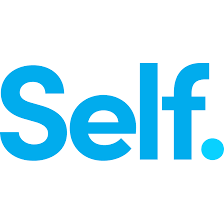Should You Take a Pawnshop Loan?
Pawnshop loans are cheaper than payday or title loans when you need fast cash. Still, consider alternatives first.
Many, or all, of the products featured on this page are from our advertising partners who compensate us when you take certain actions on our website or click to take an action on their website. However, this does not influence our evaluations. Our opinions are our own. Here is a list of our partners and here's how we make money.
Payday lenders, title lenders and pawnshops all market their services to borrowers who lack other options for fast cash. Of the three, pawnshop loans are usually the least harmful.
Interest rates on pawnshop loans vary by state and typically are presented as fees or a monthly rate, but it’s more useful to compare loans in terms of annual percentage rate. While payday loans and car title loans can have APRs of 300% or higher, pawnshop loans may be more affordable, with APRs around 200%.
» MORE: The best ways to borrow money
How pawnshop loans work
All pawnshop loans follow a similar structure: You provide an item as collateral, the shop assesses its value and offers you a loan. You then repay the loan, with interest, to get the item back.
The average pawnshop loan is less than $180, according to the National Pawnbrokers Association. Loans are typically repaid in 30 to 90 days, depending on the state. A few states, like California and New York, require pawn brokers to give borrowers at least 120 days to repay the loan before selling their item.
As with any loan, it pays to compare offers since one pawnshop may give you a better deal than another.
Borrowing from a pawnshop
Items you can pawn vary by store and location, but they often include:
- Jewelry.
- Firearms.
- Electronics.
- Collectibles.
- Tools.
- Musical instruments.
- Sporting and outdoor equipment; i.e., kayaks, bicycles, camping gear.
- Designer accessories.
The staff assesses the item’s value, condition and resale potential, and then decides whether to offer a loan. A typical loan amount is about 25% to 60% of the resale value of your collateral.
Because you’re leaving collateral with the lender, a pawn loan doesn’t require a credit check, but you must be at least 18 years old and show proof of your identity. Pawnshops work with law enforcement to avoid dealing in stolen goods, so the shop may require proof of purchase or ownership of the item.
If you accept a loan, you walk away with the cash and a pawn ticket, which you’ll need to get your item back. You can take a photo of the ticket as backup in case you lose it.
Calculating APR on a pawn loan
The best way to find out if one loan is more affordable than another is to calculate the annual percentage rate (APR). Since it includes fees, APR provides the best apples-to-apples cost comparison across all types of loans and credit cards.
Pawnshops might list fees or give interest per month rather than using APR when referring to the cost of the loan. Fees vary by state and can include insurance and storage charges.
Use the calculator below to find the APR for a pawn loan by plugging in the fees, loan amount and repayment term.
Repaying a pawn loan
When it’s time to pay the pawnshop loan back, usually in 30 to 90 days, you return to pick up the item and pay off the loan (plus fees and interest).
If you can’t repay within the original term, you may be able to extend or renew the loan by paying the interest and fees that have accrued. If you don’t repay the loan, the pawnshop sells your item to get its money back.
Know the risks: Because pawnshop loans have high rates and short repayment terms, they’re best reserved for urgent, one-time expenses. Though they can be less expensive than payday and some other high-cost loans, relying on pawnshop loans over and over risks entering a cycle of debt that’s difficult to break.
Pros and cons of pawnshop loans
Pros of pawnshop loans
No credit check: Pawnshop loans may appeal to consumers who can’t qualify for a conventional loan, since they don’t require a credit check or proof of income or employment
Quick access to funds: With a pawnshop loan, you get the money right away, so you don’t have to wait for funding like a traditional personal loan.
Failure to repay only results in losing the pawned item: There’s no legal requirement to repay a pawnshop loan, so your credit score won’t suffer if you don’t repay, nor will you be harassed by debt collectors or sued. The only consequence is losing your item.
Lenders won’t access your bank account: Unlike payday lenders, which often require borrowers to provide banking information so they can automatically debit the account, pawn brokers won’t have access to your bank account because you’re providing collateral.
Cons of pawnshop loans
High cost to borrow: The biggest downside to pawning is the cost. Consumer advocates consider an APR of 36% to be the upper end of affordability for any personal loan. A pawnshop loan of $100 that costs $10 in fees and is due in 30 days has an APR of about 122%.
May lead to repeat borrowing: About 15% of pawn loans are never repaid, according to the National Pawnbrokers Association, and repeat borrowing is common.
Won’t solve deeper financial issues: If you find yourself extending a pawn loan, or pawning and redeeming the same item repeatedly, you may need more than this short-term financial patch.
» SIGN UP: Get your free credit score with NerdWallet
When it may make sense to get a pawnshop loan
A pawnshop loan is generally an expensive way to borrow money, but it may make sense in these situations:
- You’re facing an emergency, and it’s your cheapest borrowing option. Pawnshop loans are often less costly than other no-credit-check loans, like a payday loan or title loan.
- You can afford to repay the loan in full within about 30 days. If holding onto your collateral is important, make sure you can afford to repay money you borrow from a pawn broker before it’s due.
- You have a valuable item that you can afford to part with. If possible, stick to pawning items you can afford to lose, like jewelry you rarely wear or a laptop you don’t need for work or school.
- You need to borrow money, but you’re trying to avoid incurring long-term debt. You won’t rack up long-term debt or risk your credit with a pawnshop loan because the broker will sell your collateral if you don’t repay it.
When to avoid pawnshop loans
Given the high costs and the risk of losing your collateral, think carefully before taking out a pawnshop loan. Borrowing from a pawn broker is best avoided if:
- You have a cheaper way to borrow. Consider whether you have less expensive alternatives, like a small loan from a traditional bank or credit union, or borrowing from family.
- The item is important to you, either personally or you need it. Try to avoid pawning items if you need them (for example, a bike you use to get to and from work) or they have sentimental value (like a wedding ring or family heirloom).
- You need the money for ongoing expenses. If you frequently find yourself short on funds, you may need to pursue a long-term fix, like finding ways to make more money, credit counseling or bankruptcy.
Alternatives to pawnshop loans
Before going to a pawnshop, consider more affordable alternatives. Most of these options can deliver funds within a few days.
» MORE: Alternatives to high-cost loans
Selling: If you’re willing to part with the item you’re pawning, consider selling it to a pawnshop or private buyer. A private buyer will likely pay more than a pawnshop, but it may take longer. Either way, a sale will likely net more than a pawn loan, and you won’t have to worry about making a future payment.
Payday alternative loans: A payday alternative loan, or PAL, is a type of small loan offered by federal credit unions that caps the cost of borrowing, making it easier to repay. You’ll need to become a member of the credit union before applying for a PAL.
Small-dollar loans: Mainstream banks like Wells Fargo, U.S. Bank and Bank of America offer short-term, small-dollar loans to existing customers. These loans will likely cost less than a pawn loan, but you may have to undergo a credit check. You can also get a small-dollar loan from an online lender.
Bill forbearance: If you’re not able to pay upcoming bills, contact your utility providers or creditors and see if they will extend a grace period or set you up with a hardship payment plan.
Community assistance: If you need to cover rent, utilities or other necessary expenses, see if you can get financial assistance from a local agency. There may be a charitable, religious or other community-based organization in your area that has resources and funds dedicated to assisting people in need.
Cash-advance apps: Cash advance apps like EarnIn and Dave can provide an advance on your paycheck a few days early. Look for an app that charges minimal fees or interest.
“Buy now, pay later” plans: Buy now, pay later (BNPL) apps break the cost of a purchase into equal installments, typically due over four to six weeks, with zero interest. This can stretch your dollars further for the month if you’re short on cash, but be sure to repay the installments on time — most of these plans will charge fees for late or missed payments.
AD

Self Credit-Builder LoanNerdWallet partners with Self to help you build credit for the things that matter - no credit score needed to get started.
at Self
» MORE: Best personal installment loans
Breaking the debt cycle
Building an emergency fund is the best way to avoid borrowing high-cost loans, but it can seem daunting if you need cash today. Any amount of money you can save each month, whether it’s $5 or $50, will put you on the path toward building a safety net. That way, you’ll have interest-free money to rely on the next time a financial emergency strikes.
For help building a budget, finding ways to access cash and saving money, contact a nonprofit credit counseling agency. These organizations offer basic budgeting and financial education services, and some services are free.
Frequently Asked Questions
How much will a pawnshop give you for a $1,000 item?
Pawnshops typically let you borrow around 25% to 60% of an item’s appraised value, so you could borrow between $250 and $600 if your collateral is worth $1,000.
What’s the difference between a pawnshop loan and a payday loan?
Both pawnshop loans and payday loans are short-term, high-interest loans. A pawnshop loan is money you borrow from a pawn broker by pledging an item of value (like electronics or jewelry) as collateral. You get the item back if you repay the loan, plus interest and fees. A payday loan doesn’t require collateral, but you’ll need to give the lender a post-dated check or access to your bank account so they can collect the loan amount, interest and fees.
Do pawnshop brokers charge interest?
Yes, pawnshops charge interest in other fees. Check the loan’s APR to see the full cost of borrowing in a year. Typical pawnshop APRs run as high as 200%, though some states cap the APR at 36%.
Article sources
NerdWallet writers are subject matter authorities who use primary,
trustworthy sources to inform their work, including peer-reviewed
studies, government websites, academic research and interviews with
industry experts. All content is fact-checked for accuracy, timeliness
and relevance. You can learn more about NerdWallet's high
standards for journalism by reading our
editorial guidelines.
Related articles










